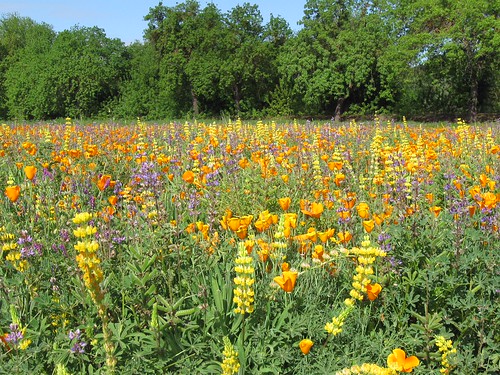
Blueberry bushes provide food for both bumblebees and people. (Photo credit: Nancy Adamson/ National Agroforestry Center.)
Today, farms in the U.S. are larger and have less nearby habitat to support bees than in the past, yet the need for pollinators in rural landscapes has never been greater. In light of concerns over pollinator declines, a Memorandum was released by President Obama on June 20, 2014, Creating a Federal Strategy to Promote the Health of Pollinators. Since the release of this Memorandum, USDA agencies have been taking additional steps to support pollinators.
One question many people are asking is: how can we incorporate more pollinator habitat into our communities, agricultural lands, and forests?
Ongoing research by the U.S. Forest Service demonstrates that the number of pollinators in our landscapes can be increased through agroforestry and other land management practices. Agroforestry is the intentional integration of trees and shrubs into crop and animal farming systems.
For producers of insect pollinated crops, pollinator habitat and floral diversity on the farm can also pay dividends by improving crop pollination and reducing pest populations, while also supporting their production and natural resource conservation goals.
Agroforestry practices can be managed to add more flowering plants and nesting habitat to agricultural or community landscapes. Riparian forest buffers can include fruits and nuts like paw paws and hazelnuts, which both people and pollinators enjoy. Flowering trees can be added to silvopasture systems, supporting pollinators while providing shade for livestock and adding an additional income source.
In the Pacific Islands, producers use crop diversity and multi-story farming to support pollinators. Pollinators are also important to ginseng and other plants grown in the forest understory using forest farming methods.
Additionally, the USDA National Agroforestry Center has developed a number of publications that highlight the role agroforestry can play in supporting pollinators.

A windbreak protects a field with flowering plants (Photo credit: Jessa Kay Cruz/ National Agroforestry Center.)
No comments:
Post a Comment
Note: Only a member of this blog may post a comment.